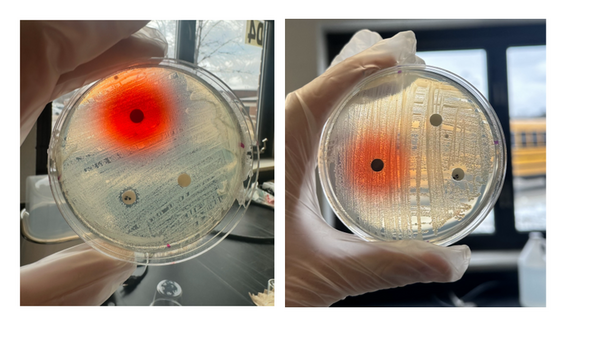The effects of cochineal and Allura Red AC dyes on Escherichia coli and Bacillus coagulans growth
(1) Williamston High School Math and Science Academy
https://doi.org/10.59720/24-169
As the usage of artificial dyes has increased, so have concerns about their effects. This research aimed to determine if the effects of Allura Red AC dye (FD-&-C Red 40) is more detrimental than the effects of a natural dye, specifically cochineal or carmine red dye, which is made from crushed insects. This research focused on the effects of the respective dyes on the growth of two gut bacteria: Escherichia coli and Bacillus coagulans, which is also known as Heyndrickxia coagulans. Agar plates were streaked with either E. coli or B. coagulans, followed by application of two sterile disks to each plate, one control and one soaked in dye. The plates were then incubated for 24 hours and 48 hours, respectively. After the allotted growth period, the mean growth coverage rating in the area surrounding each disk was determined for each plate. We hypothesized that the Allura Red AC dye would result in reduced gut bacteria growth, while cochineal dye would have no effect on gut bacterial growth. Using a one-tailed t-test, the dye-disk growth means from the trials were compared to their corresponding control disk. Only E. coli with Allura Red AC dye had significant results, with the Allura Red AC dye amplifying bacterial growth when compared to the control. This implies that the consumption of Allura Red AC dye may increase the growth of E. coli bacteria within the human gut.
This article has been tagged with: